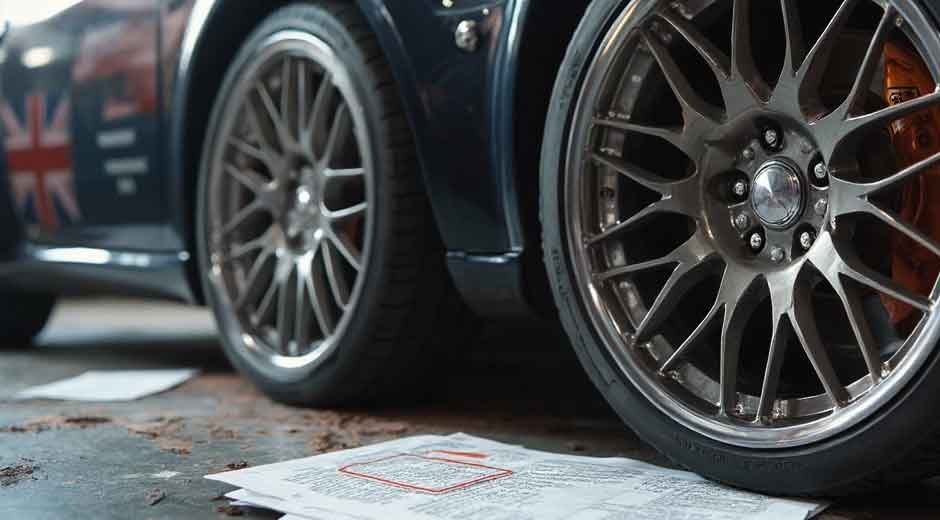Upgrading your wheels is one of the easiest ways to enhance both the performance and appearance of your ride. But with so many styles, finishes, and sizes available, it’s easy to make a mistake that could impact your vehicle’s safety, handling, or overall ride quality. Whether you’re building a muscle car, daily driver, or show-stopper, avoiding common pitfalls will ensure your investment is worth every penny. Here are five mistakes you should steer clear of when shopping for aftermarket wheels.
Ignoring Proper Fitment Specs
One of the most common—and costly—mistakes is failing to consider proper wheel fitment. It’s not just about bolt pattern; offset, backspacing, hub bore, and diameter all play a crucial role in whether a set of wheels fits your car safely and correctly. Even the best-looking wheels are worthless if they rub against your fender liners or interfere with your brake calipers.
For example, if you’re looking to upgrade your muscle car with hellcat wheels, it’s essential to match your new set to factory specifications or ensure your suspension can handle the change. Improper offset can lead to steering issues and uneven tire wear, while incorrect diameter may require tire stretching or fender rolling—both of which can be risky if done wrong.
Always check your vehicle’s OEM specs and, if necessary, consult with a professional installer. Many reputable wheel retailers offer fitment guides or compatibility tools to help match your ride with the right size and spec.
Skipping Research on Wheel Material
Not all wheels are created equal—especially when it comes to the material used in manufacturing. Forged wheels, cast aluminum, and flow-formed wheels each offer different benefits and drawbacks in terms of weight, strength, and cost.
If you’re considering mustang wheels, it’s vital to assess how you plan to use the car. For aggressive track use, forged wheels offer unbeatable strength-to-weight ratio, but they come at a premium. Cast aluminum wheels are more affordable and sufficient for street driving, but may crack under extreme loads.
Flow-formed wheels offer a balance between the two—lighter and stronger than cast, but more affordable than fully forged options. Investing in the right material ensures durability, safety, and better long-term performance.
Overlooking Wheel and Tire Packages
Buying wheels and tires separately can be more expensive—and riskier—than purchasing a full package. Mustang wheel and tire packages are pre-matched for optimal fitment and often come pre-mounted and balanced, saving you time and potential headaches during installation.
A proper package also ensures the tire sidewall complements your new wheels in terms of ride height and load rating. Skipping this step could result in rubbing, premature tire wear, or even suspension issues.
Not to mention, ordering a full package can help you avoid compatibility issues between tire bead size and wheel lip profile—something first-time buyers often overlook. And because these packages are often discounted as a bundle, you might even save money while avoiding common fitment issues.
Choosing Style Over Substance
Let’s face it—aftermarket wheels are as much about looks as they are about performance. But don’t let aesthetics overshadow essential factors like weight, strength, and road compliance. Heavier wheels might look great, but they can significantly impact acceleration, braking distance, and fuel efficiency.
Stick with brands known for quality and engineering. Flashy finishes and aggressive designs are tempting, but they should come with a track record of performance and reliability. Always read reviews, research the brand, and ask questions about manufacturing methods before purchasing.
Failing to Account for Daily Driving Conditions
Your environment matters. If you live in an area with rough roads, snow, or heavy rain, your wheels need to match those conditions. Deep-lipped wheels may collect slush or debris, while certain finishes may corrode faster in salty environments.
Also, consider maintenance. Gloss black or chrome wheels look fantastic but show dirt and scratches easily. Matte finishes may require special cleaning products. Make sure your wheel choice aligns with your lifestyle and how much time you’re willing to spend on upkeep.
Final Thoughts
Choosing the right aftermarket wheels isn’t just about style—it’s about performance, fitment, and long-term reliability. Whether you’re going for aggressive hellcat wheels, bold mustang wheels, or ready-to-install mustang wheel and tire packages, doing your homework ahead of time will pay off every mile.
By avoiding these five common mistakes, you’ll enjoy better handling, improved safety, and a look that turns heads without sacrificing drive quality. Take your time, ask the right questions, and invest in a setup that performs just as good as it looks.

